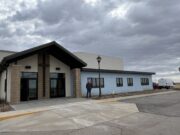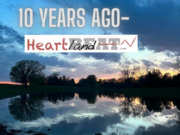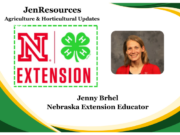Nebraska and local rural weather experts say NWS shortages threaten public safety because of thin staffing
BY: JUAN SALINAS II
Nebraska Examiner Press Release
LINCOLN — Two National Weather Service offices that cover some rural parts of Nebraska will no longer monitor local weather around-the-clock.
The Weather Service offices in neighboring states that forecast parts of western and southwest Nebraska cut back from 24/7 coverage after staffing reductions were made under the Elon Musk-led Department of Government Efficiency. One office in Wyoming covers eight counties in the Nebraska Panhandle, and the other, in Kansas, forecasts for three counties in the southwestern corner of Nebraska.
Those two offices in neighboring states are among only four nationally so short of staff that they lack enough meteorologists to staff an overnight shift. Other nearby forecasting offices — dealing with their own staffing problems — will have to handle the load during those shifts. They will be tasked with monitoring conditions and temporarily issuing forecasts and warnings each night for the two regions in addition to their normal coverage duties.

Earlier this month, five former National Weather Service directors wrote an open letter to the public expressing fears that the cuts would endanger lives. An agreement last month between the Weather Service and its employees’ union warned of “degraded” services as more people leave.
“These shortages threaten public safety,” said Nebraska State Climatologist Deb Bathke, who works out of the State Climate Office based at the University of Nebraska-Lincoln.
Bathke said staff may be unable to provide accurate and timely severe weather warnings, monitor for storm reports and monitor radar during severe weather because the offices are running thin.
National Oceanic and Atmospheric Administration spokesperson Kim Doster told the Nebraska Examiner that the Weather Service has updated the service level standards for its weather forecast offices to manage impacts from shifting personnel. The same NOAA spokesperson told the New York Times that “several local NWS offices are temporarily operating below around-the-clock staffing.”
“These revised standards reflect the transformation and prioritization of mission-essential operations, while supporting the balance of the operational workload for its workforce,” Doster told the Examiner.
The Trump Administration fired roughly 600 workers at NOAA and NWS in March as it tried to reshape the federal bureaucracy. NWS was understaffed long before Trump’s second term, but the recent cuts required “urgent action,” according to NOAA.
NOAA is offering paid moving expenses to get employees to move voluntarily to fill positions across the country, including the Kansas office that covers Nebraska. Like other rural areas across the U.S, rural Nebraska has fewer news outlets providing crucial, time-dependent information, such as weather alerts, to the public. Many of those areas rely on rural radio stations.
Nebraska Rural Radio Association, also known as Rural Radio Network, is a group of stations owned by farmers and ranchers that provides news and weather reports for rural areas of the state. NRRA’s Bill Boyer, who manages the Scottsbluff market, said the change “raises concern” due to the possibility of a missing severe weather alert.
Boyer said that western Nebraska had its own NWS office in the 1990s, but it was shut down, and the remaining operations were moved to the Cheyenne office in Wyoming.
“More troubling is that we received no communication from the National Weather Service,” Boyer said.
Kevin Spencer, manager of the biggest city in the Panhandle, Scottsbluff, told the Examiner that the city is monitoring the changes to the Cheyenne NWS office and working with the Scotts Bluff County Emergency Management Office to do so.
“We support NWS staff and have complete confidence in their ability to manage their time effectively, ensuring we receive accurate information in the event of inclement weather,” Spencer said. “We have been assured that staff will be available in case of severe weather.”
The two parts of Nebraska affected by the recent staffing cuts in forecasting are in U.S. Rep. Adrian Smith’s congressional district and include his Gering-area home.
Smith said timely and reliable weather warnings can make all the difference in a region of the state where severe weather can arise suddenly.
“I am working to get additional information from the NWS to ensure Nebraskans have access to the information they need when it counts,” Smith said.
Russ Pankonin, who lives in the state’s southwestern corner, in Imperial, said this is the first time the region has felt a direct effect of DOGE. Pankonin said the area shouldn’t feel an impact if the other offices tasked with the overnight shift can handle it. He ran the rural Imperial Republican newspaper and several nearby papers for years.
This isn’t the first DOGE cut to the Weather Service affecting Nebraska this year.
In April, an NWS office in the Omaha area and other Great Plains offices announced pausing the deployment of weather balloons. That decision was reversed after some of the state’s federal delegation pushed back on those DOGE cuts. At the time, U.S. Rep. Mike Flood, R-Neb., said he hoped to introduce legislation that would reclassify National Weather Service employees as public safety personnel because it would exempt them from future hiring freezes and buyouts. Flood has since said the station is launching two weather balloons a day.
However, the Omaha area NWS office has said it is still facing staffing issues.



































